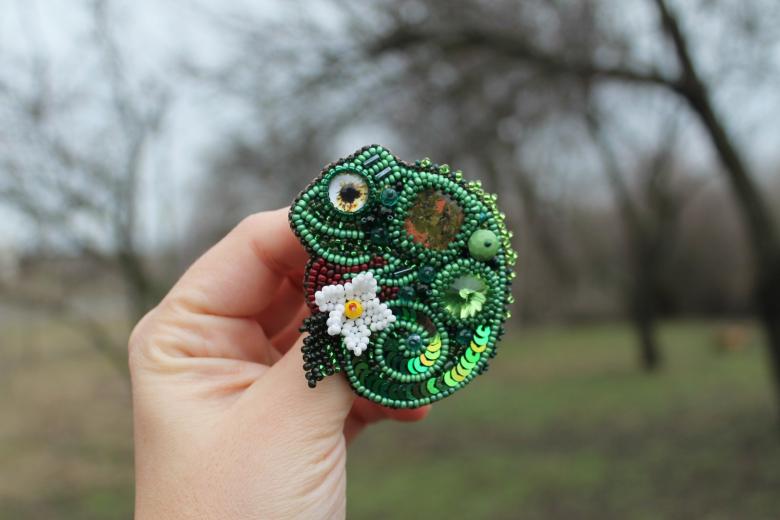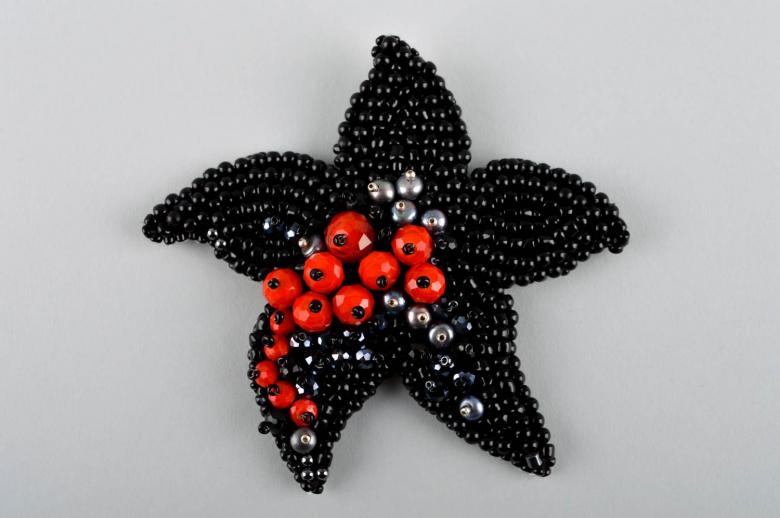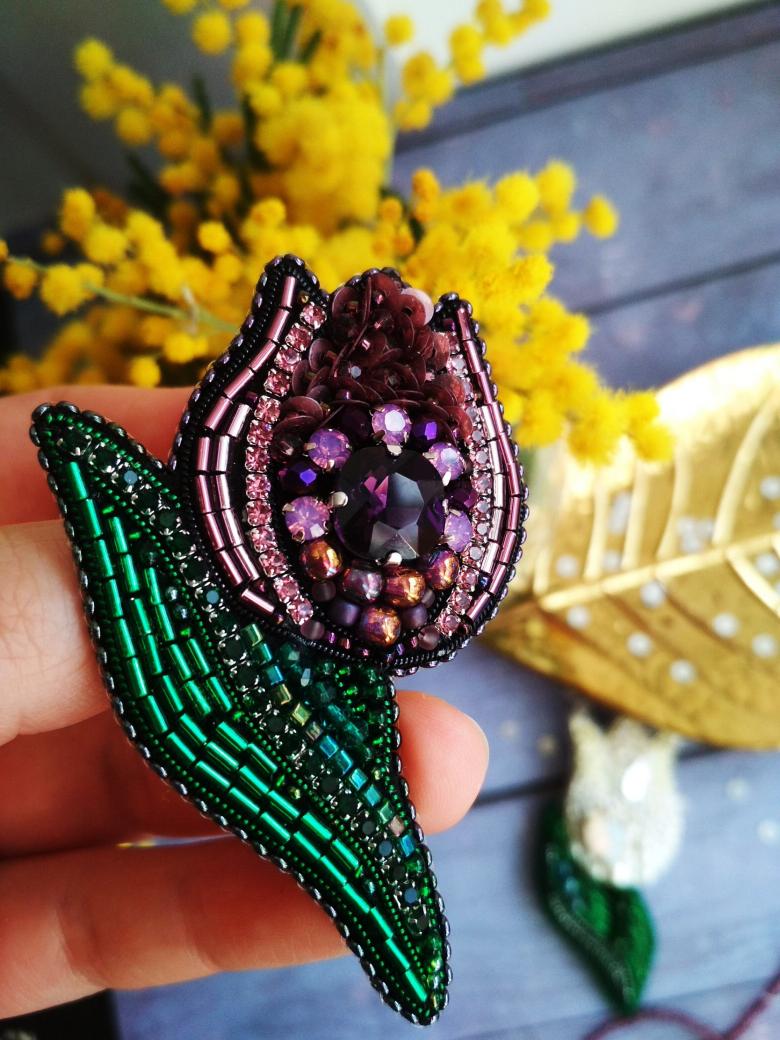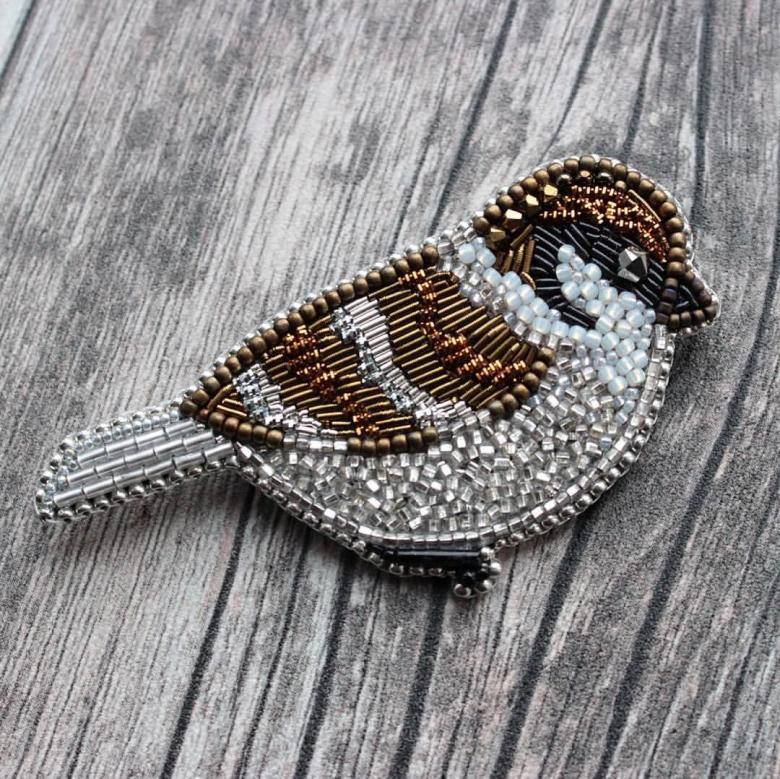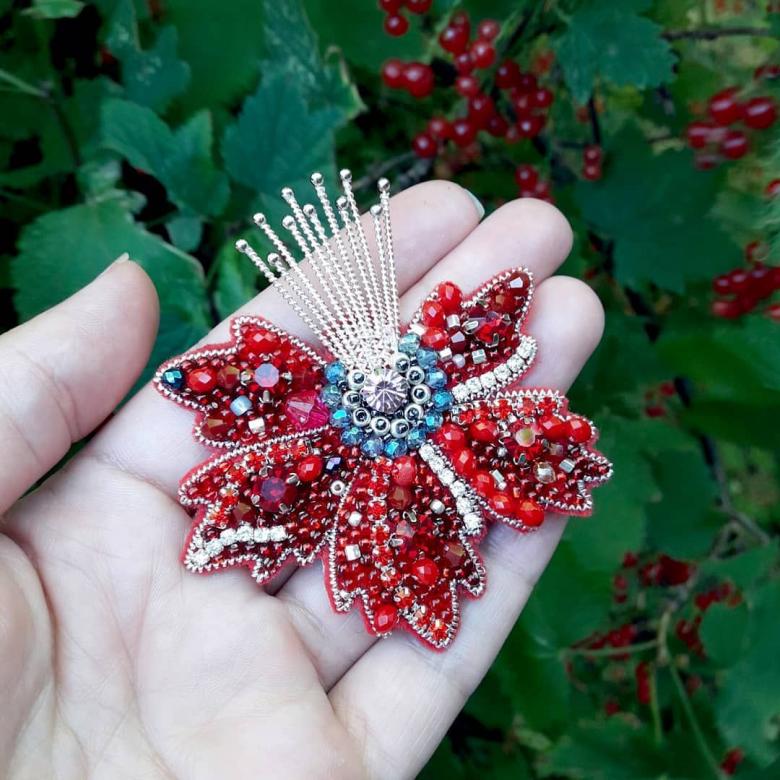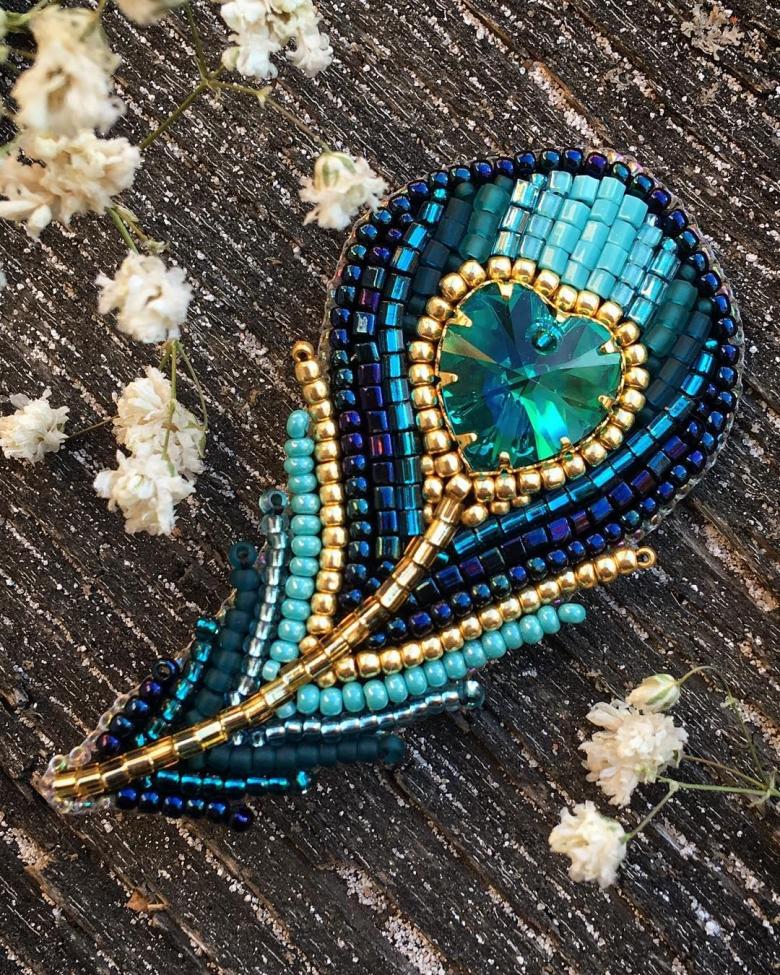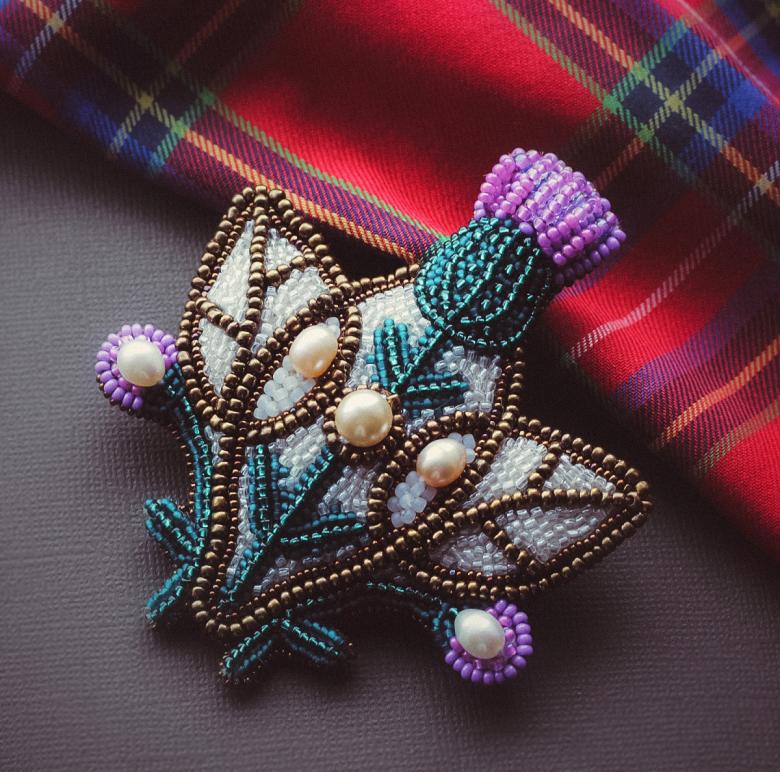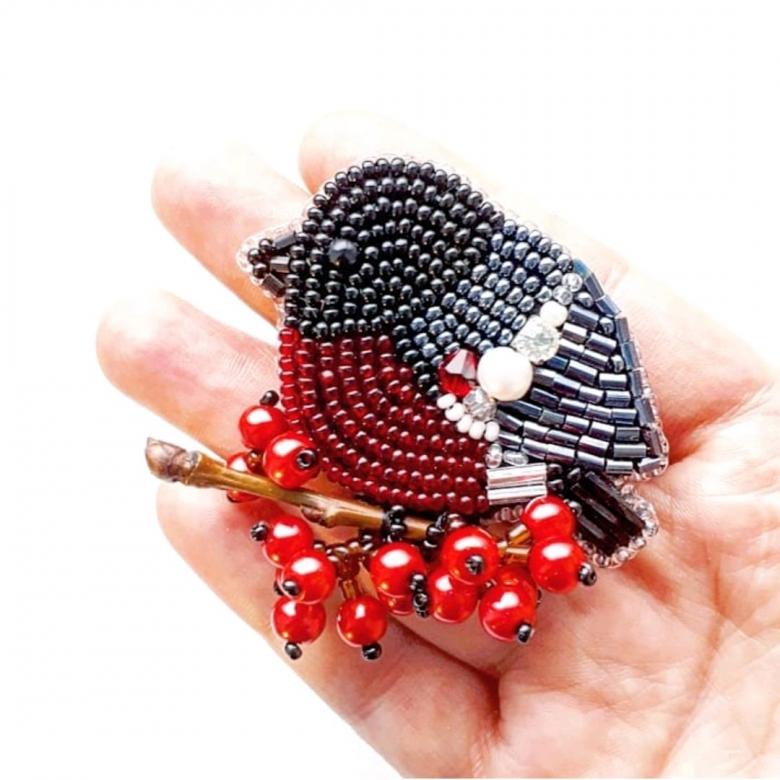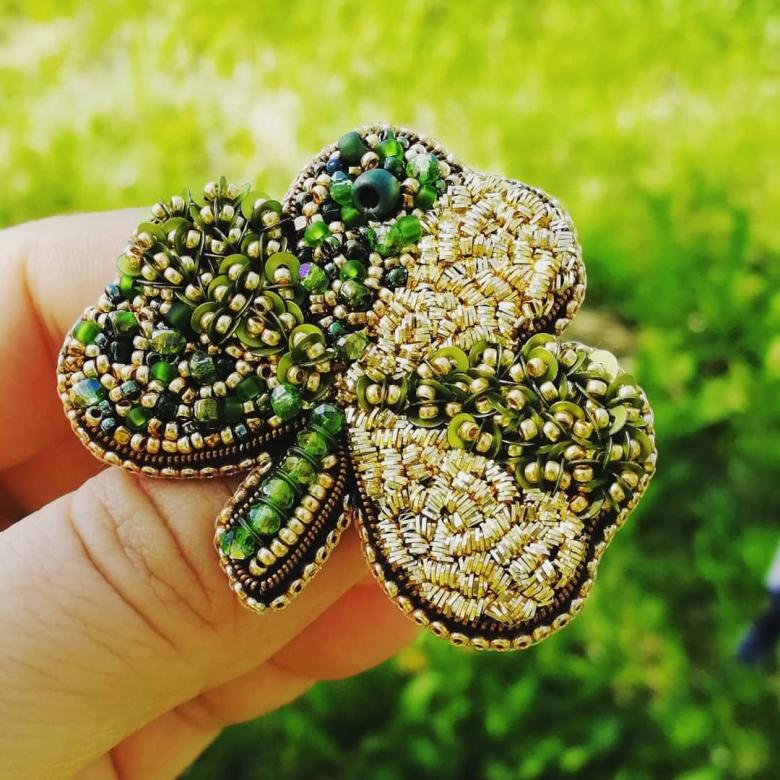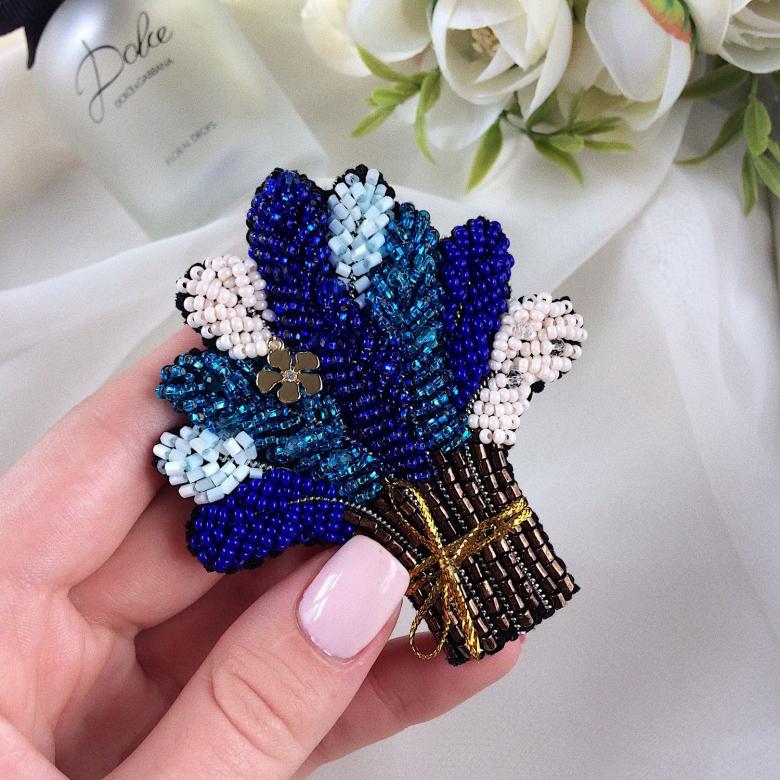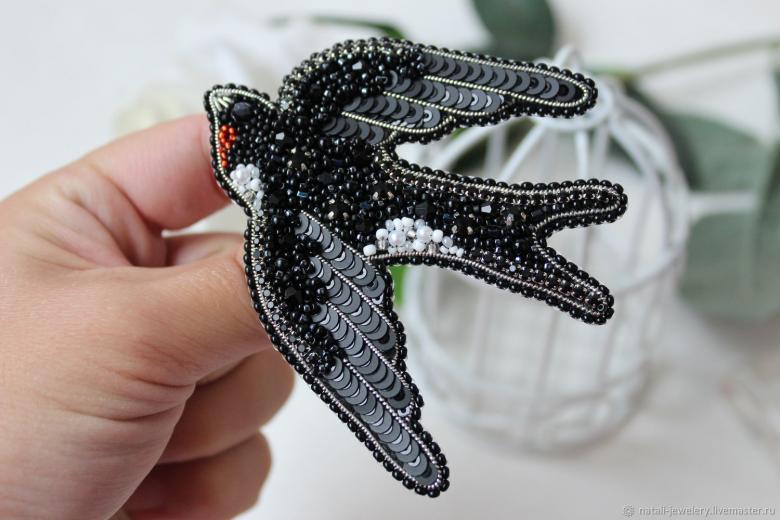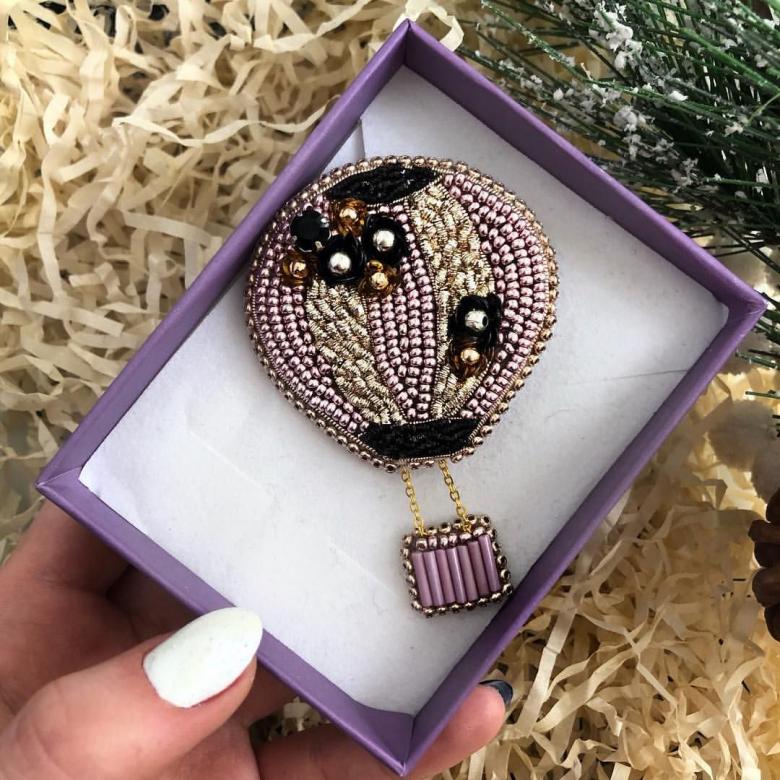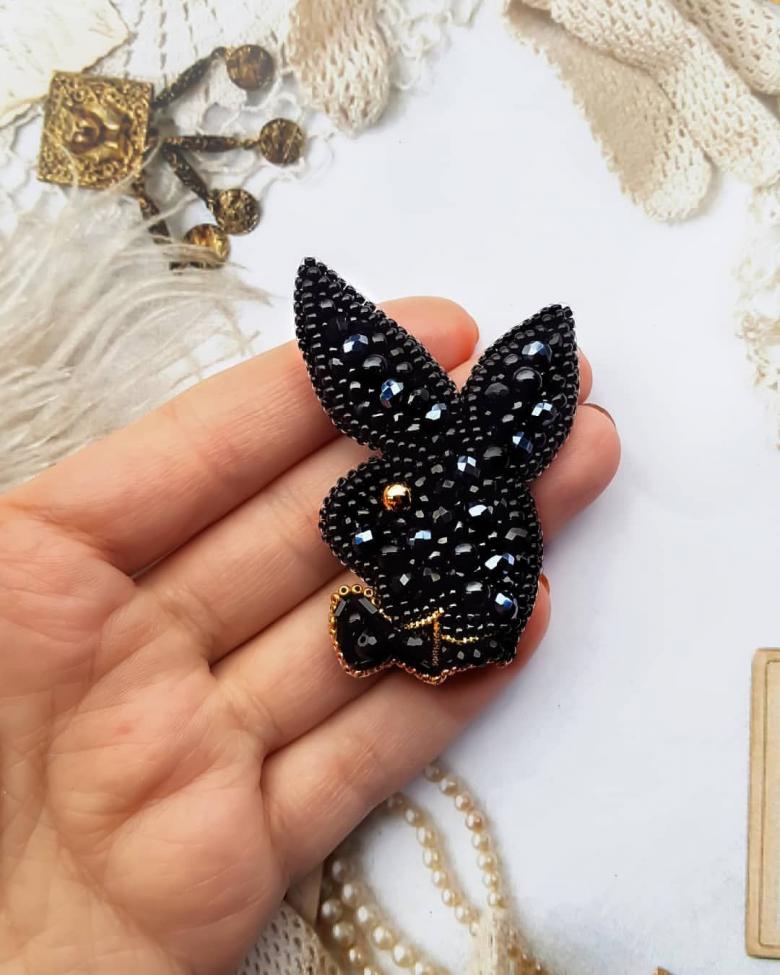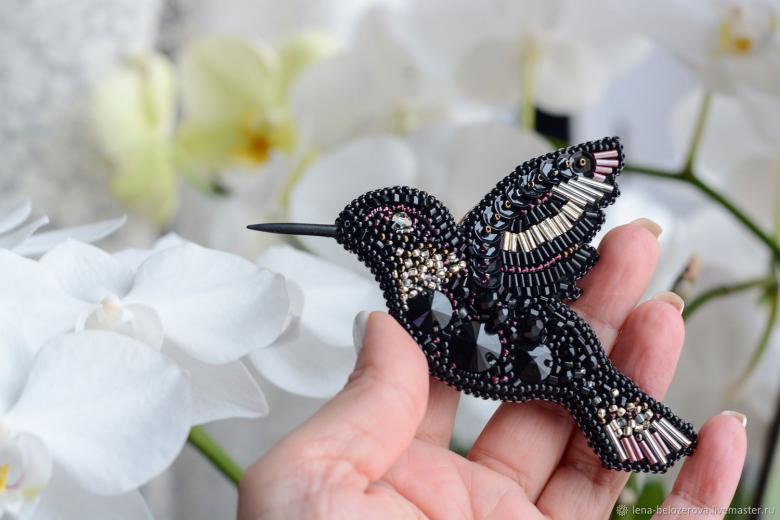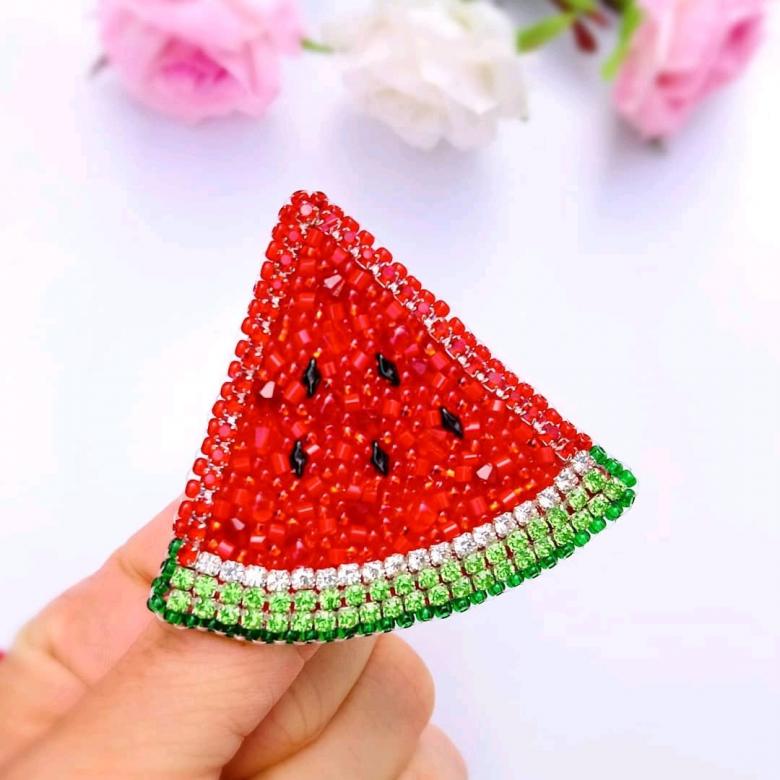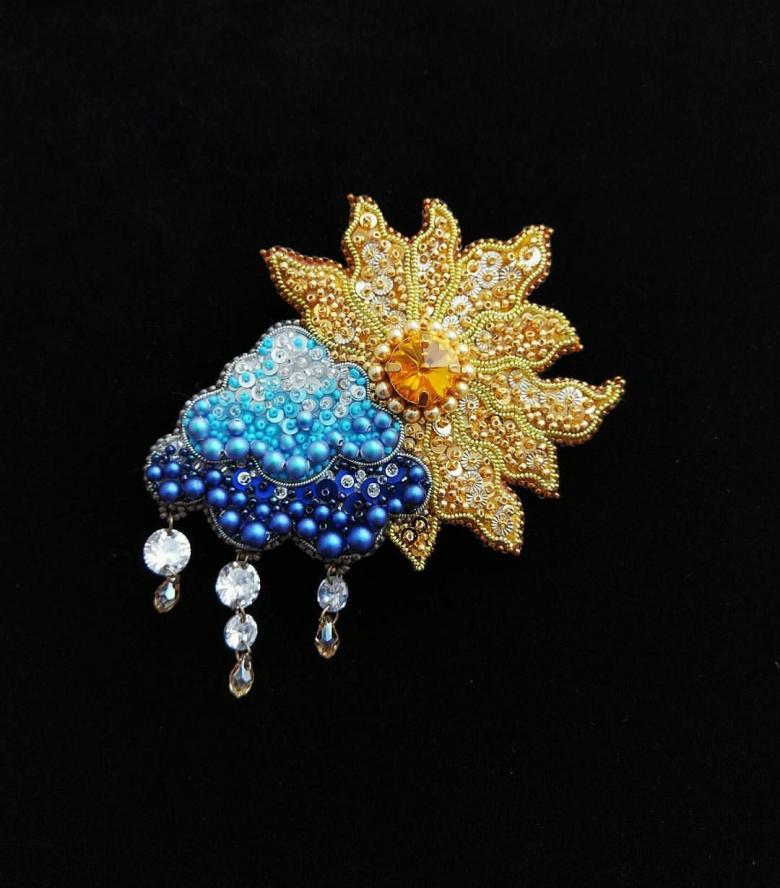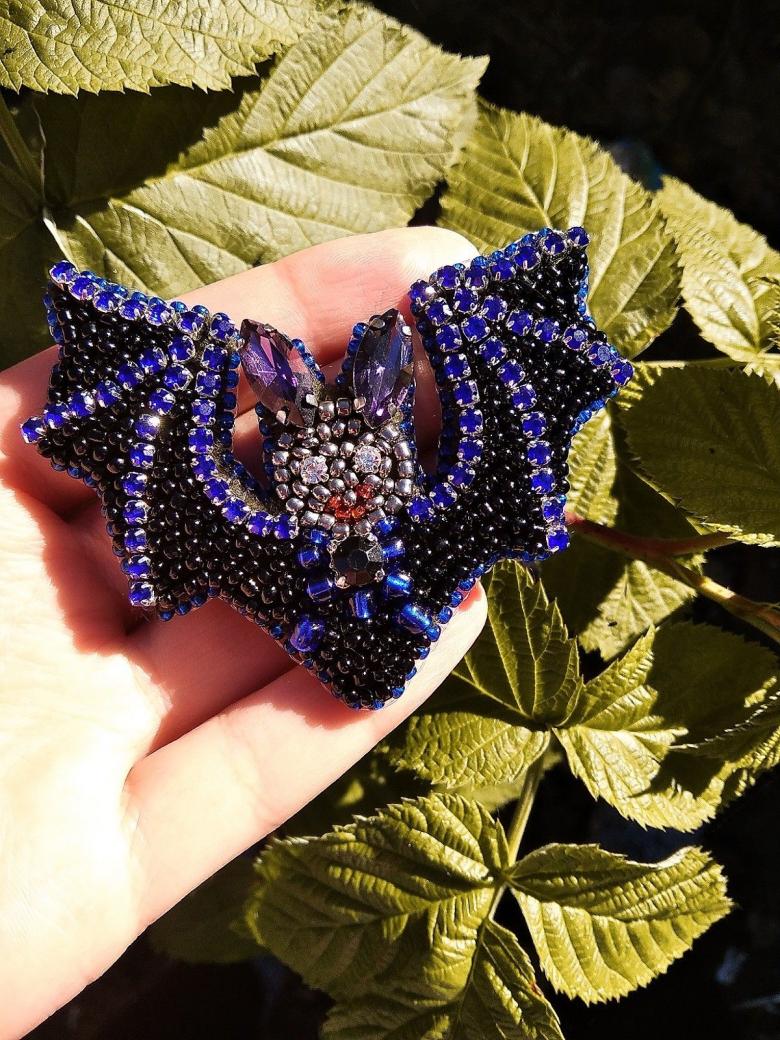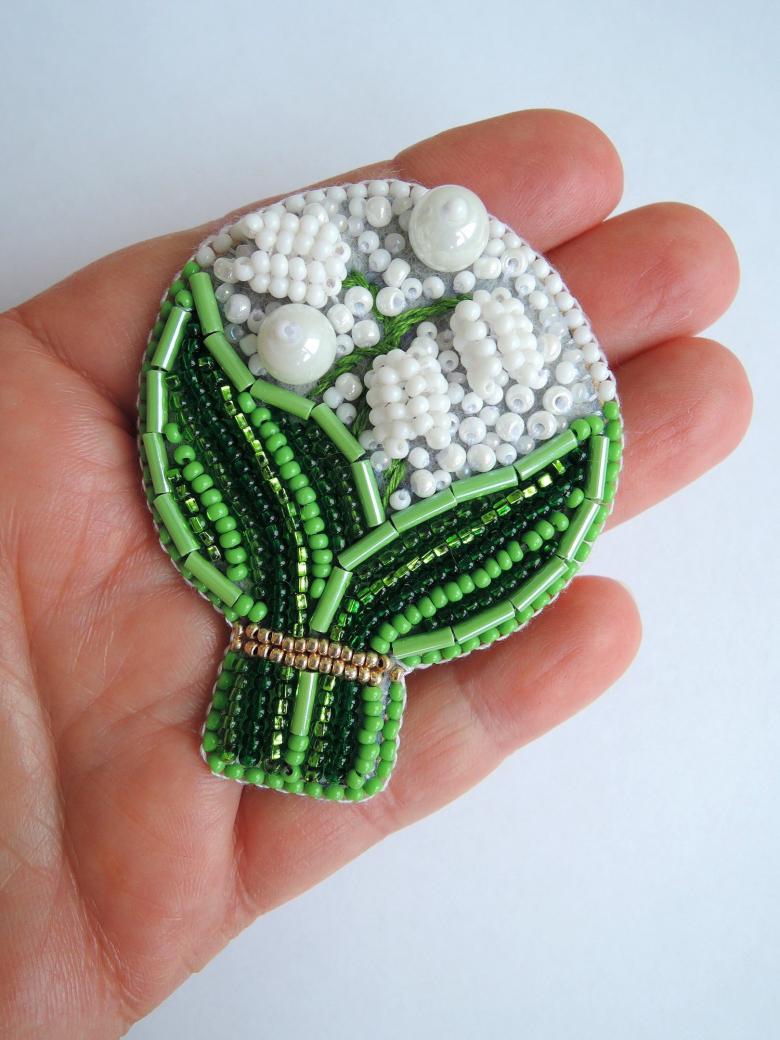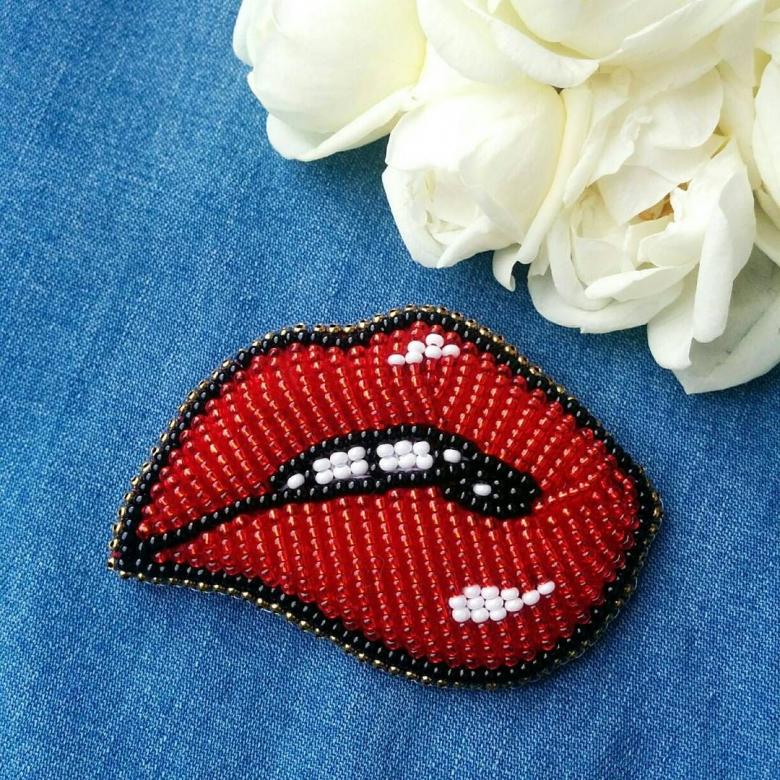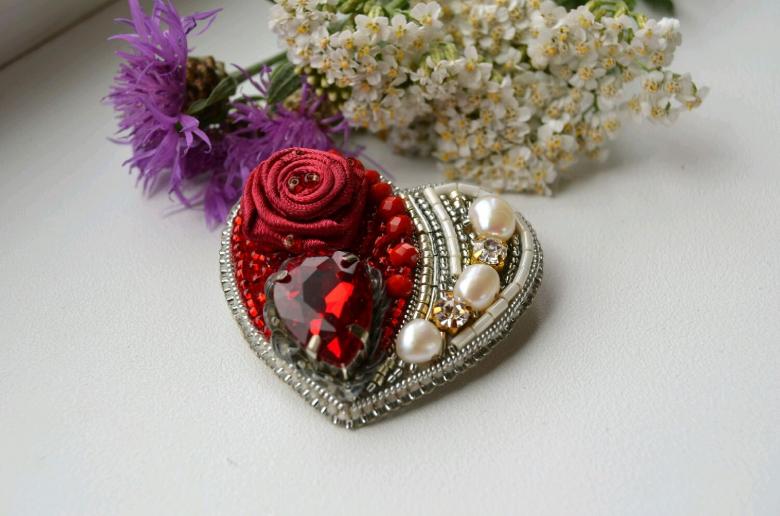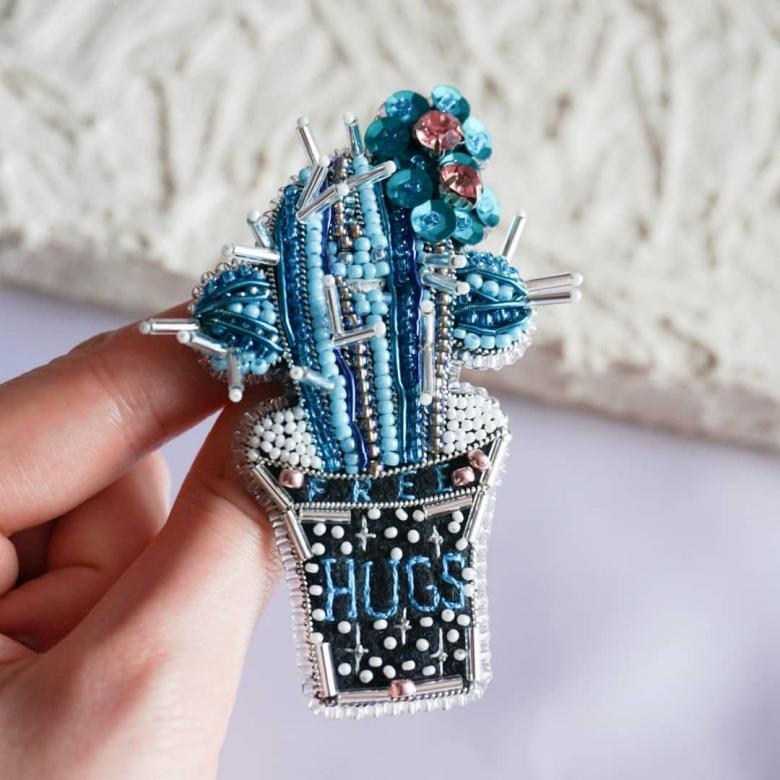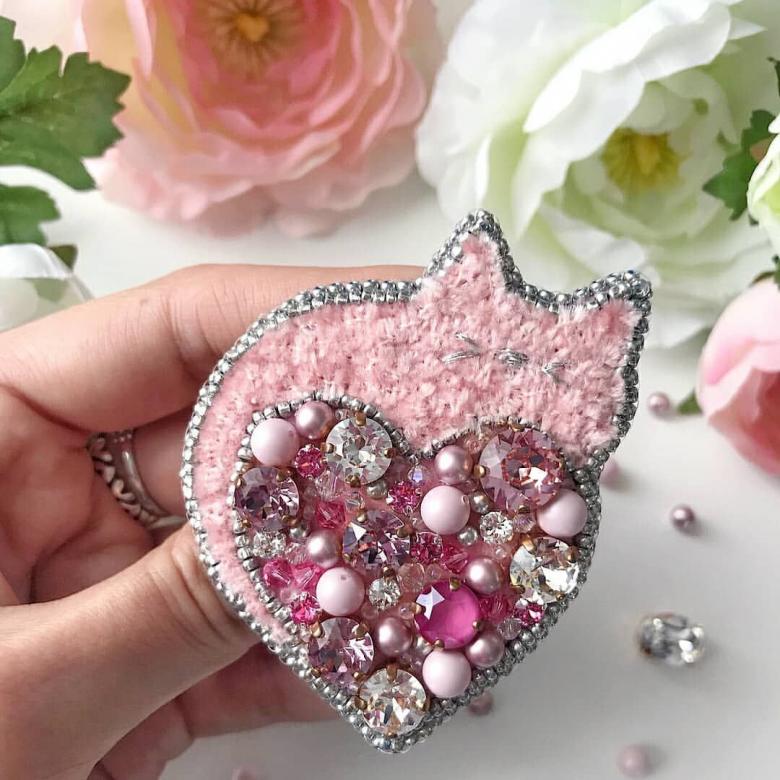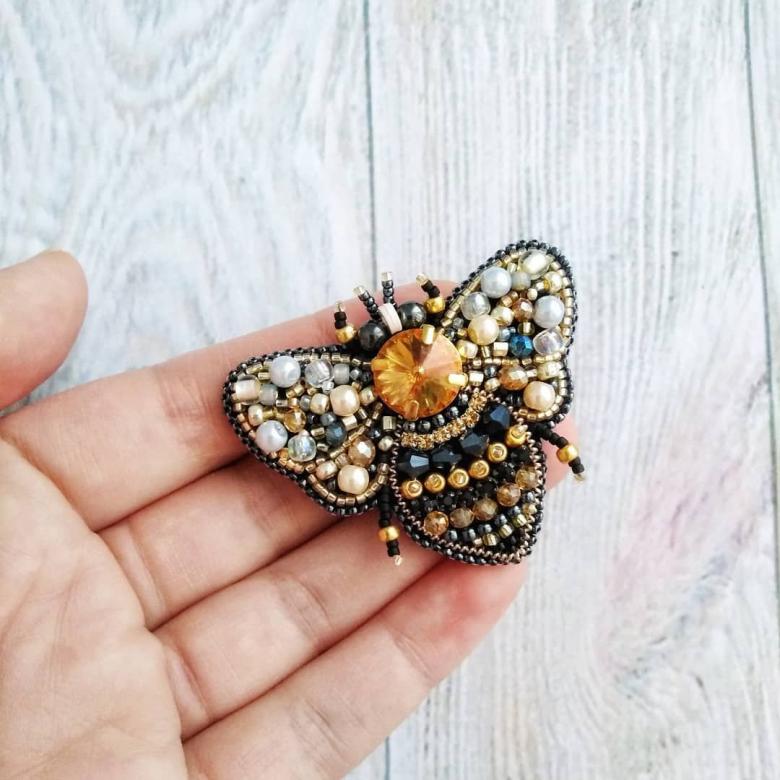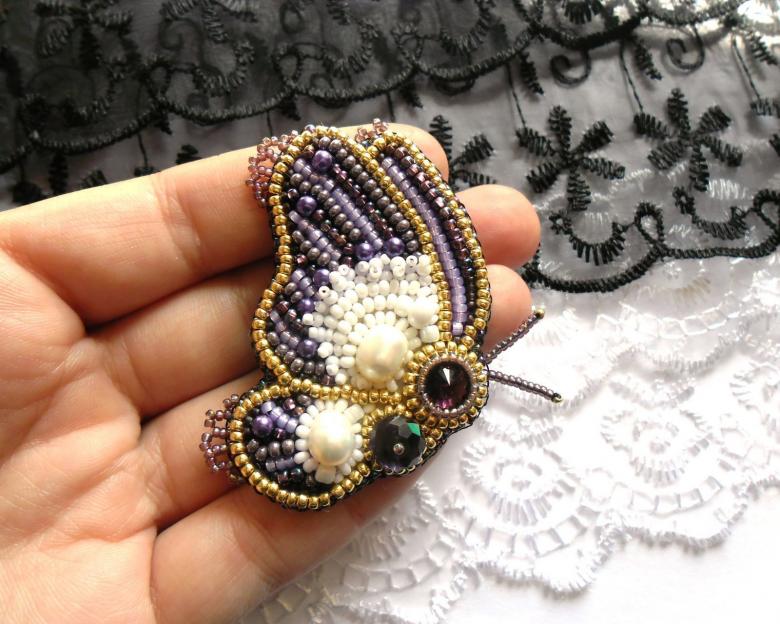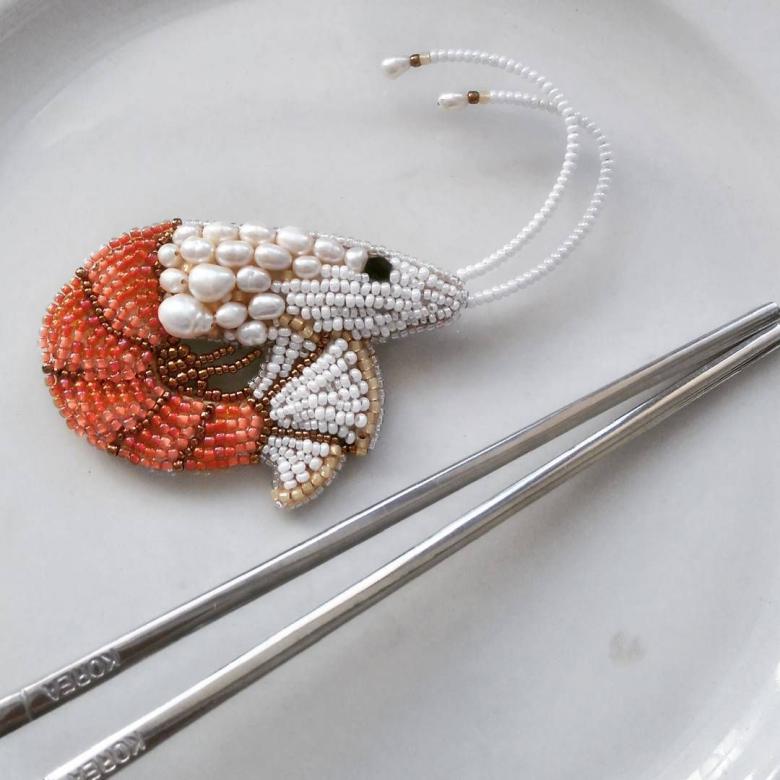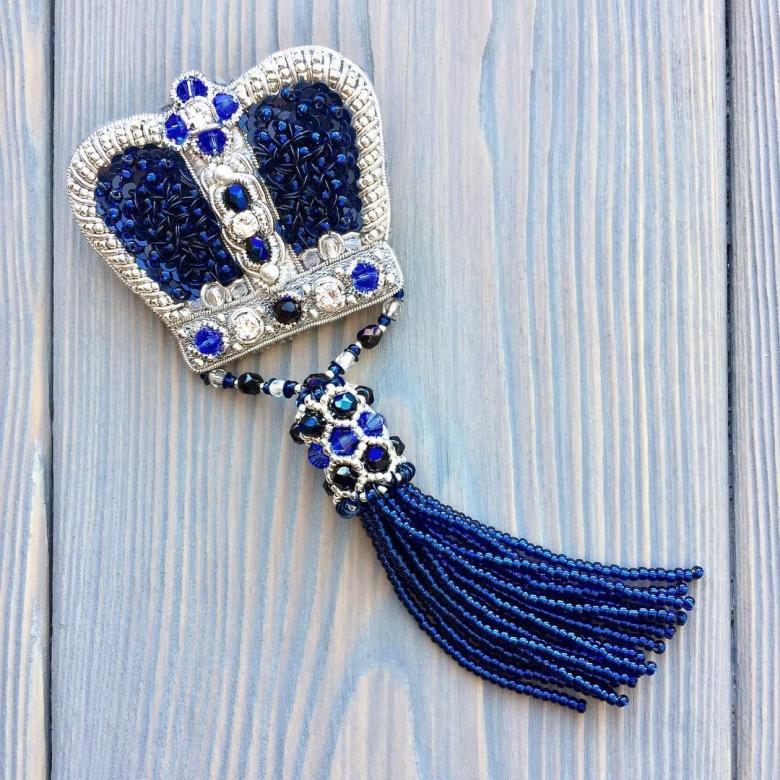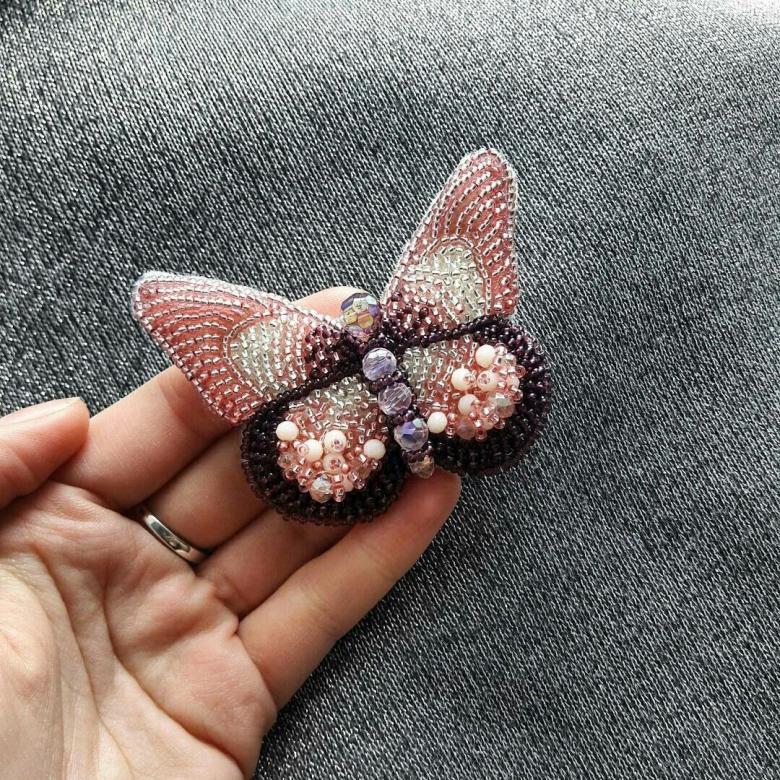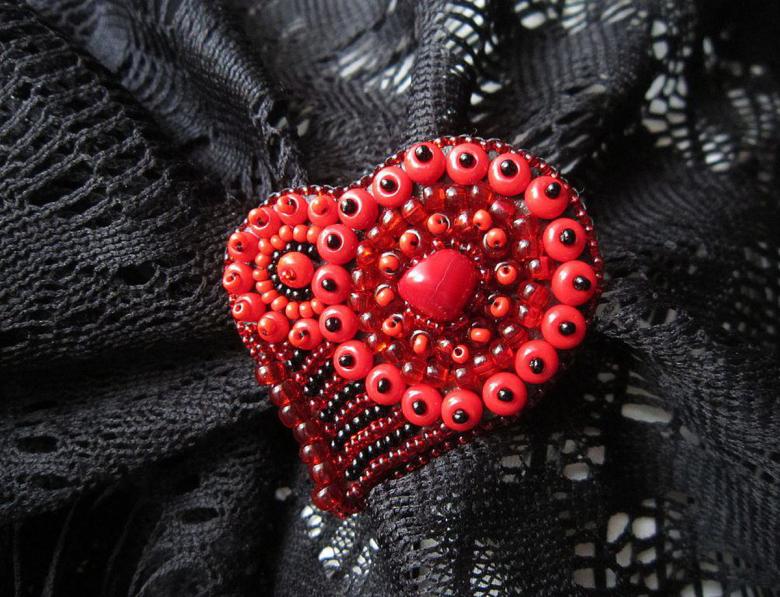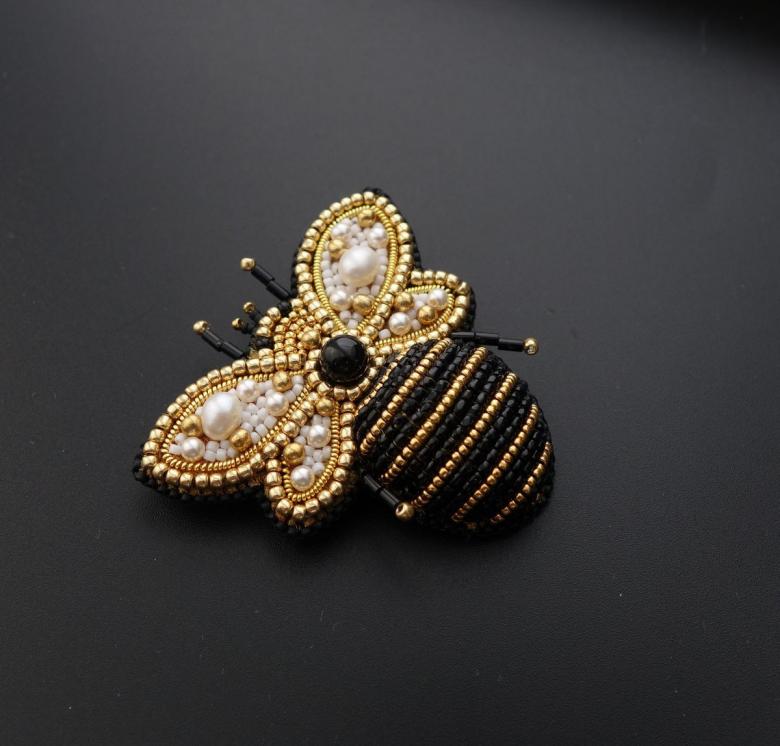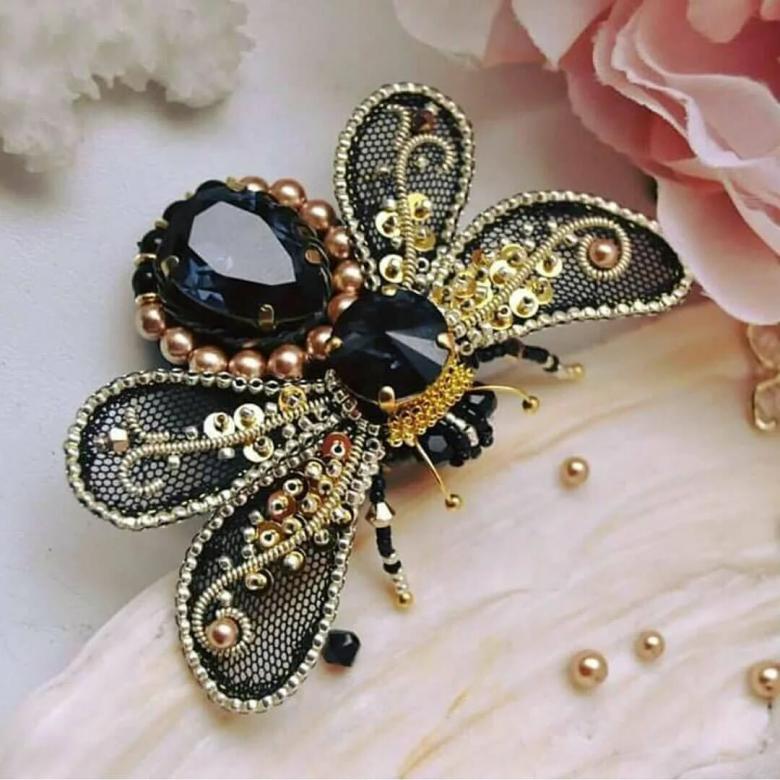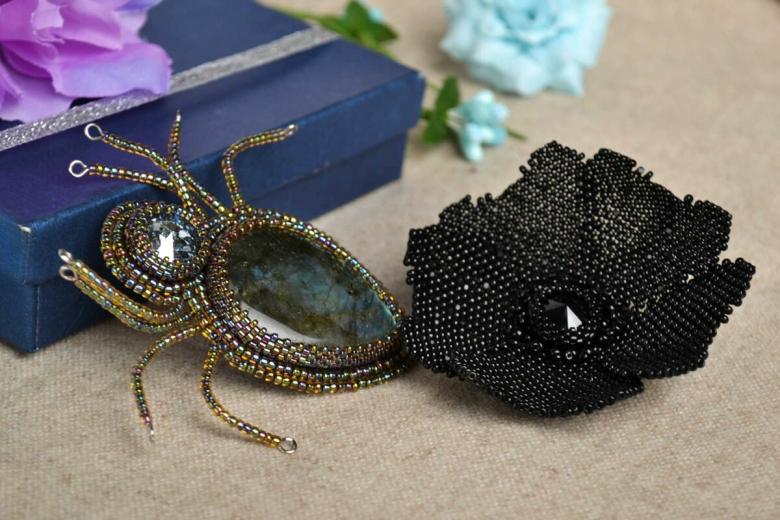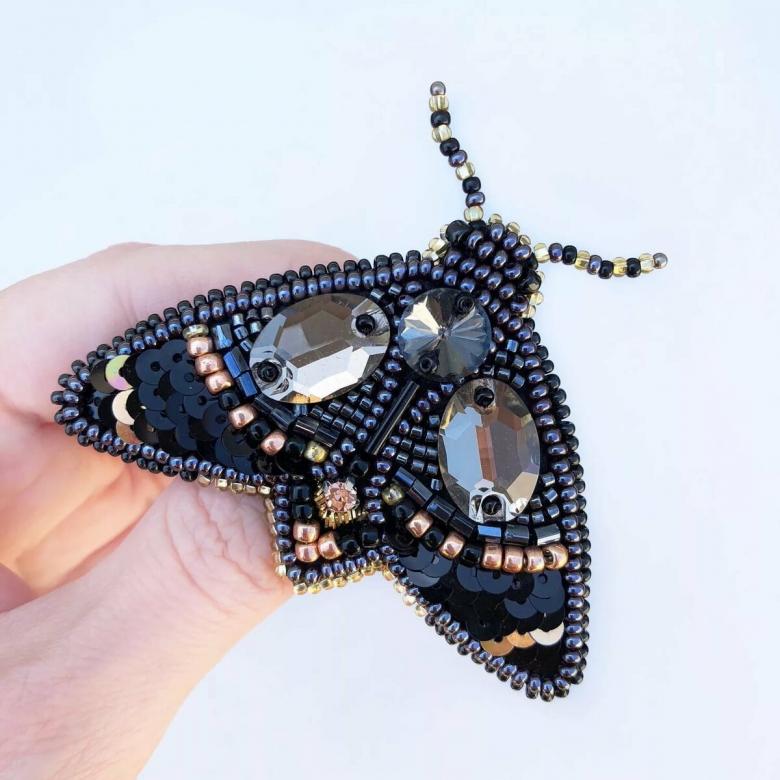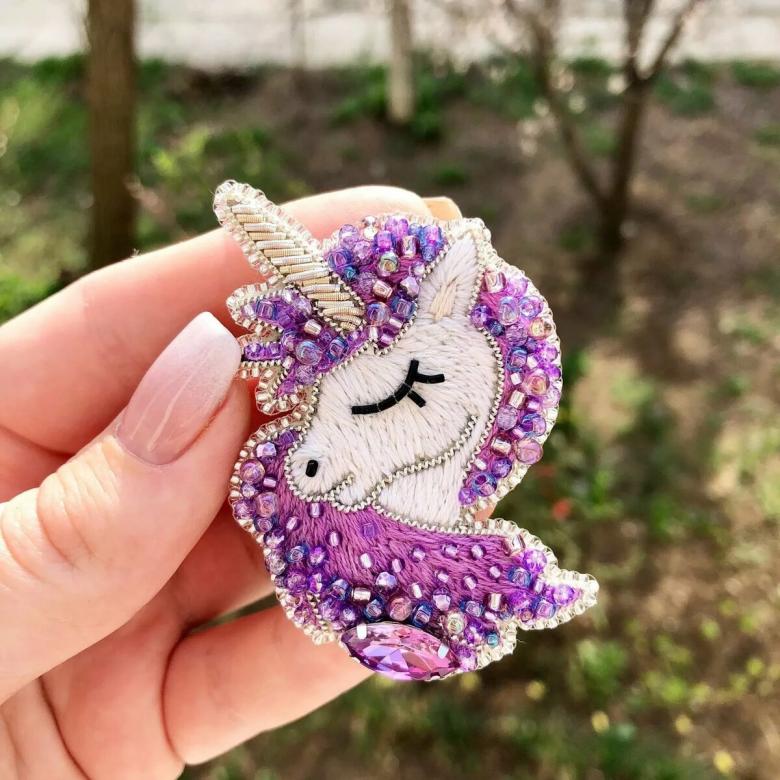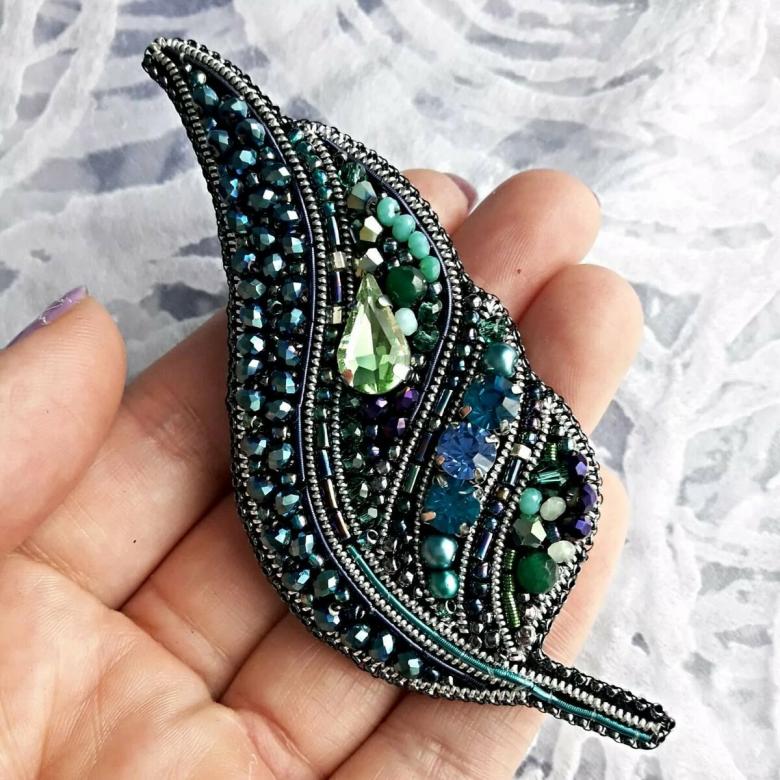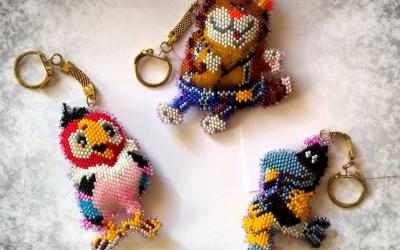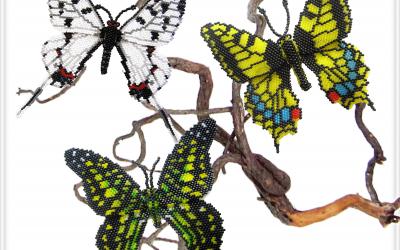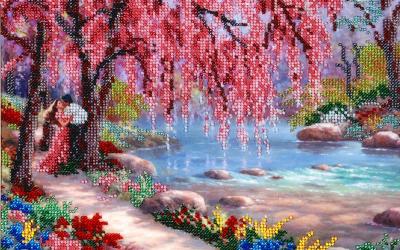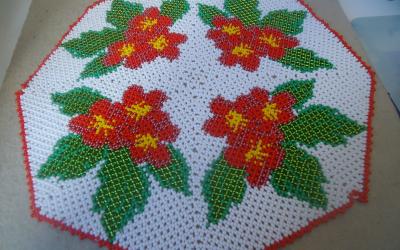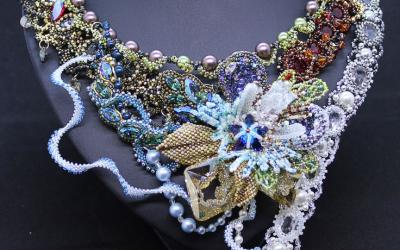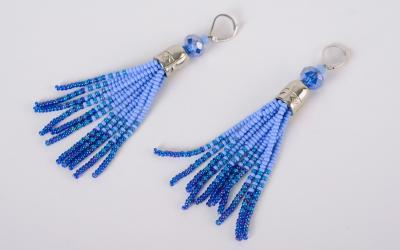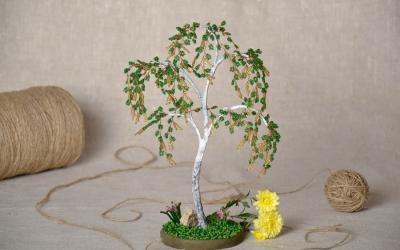Beaded brooch - variants and diagrams of weaving original and beautiful brooches
Recently, small jewelry and decorative items made by hand are gaining in fashion. The cost of these things is quite expensive, but spending a little time, you can make them yourself. In this article we will talk about making brooches from beads with your own hands.
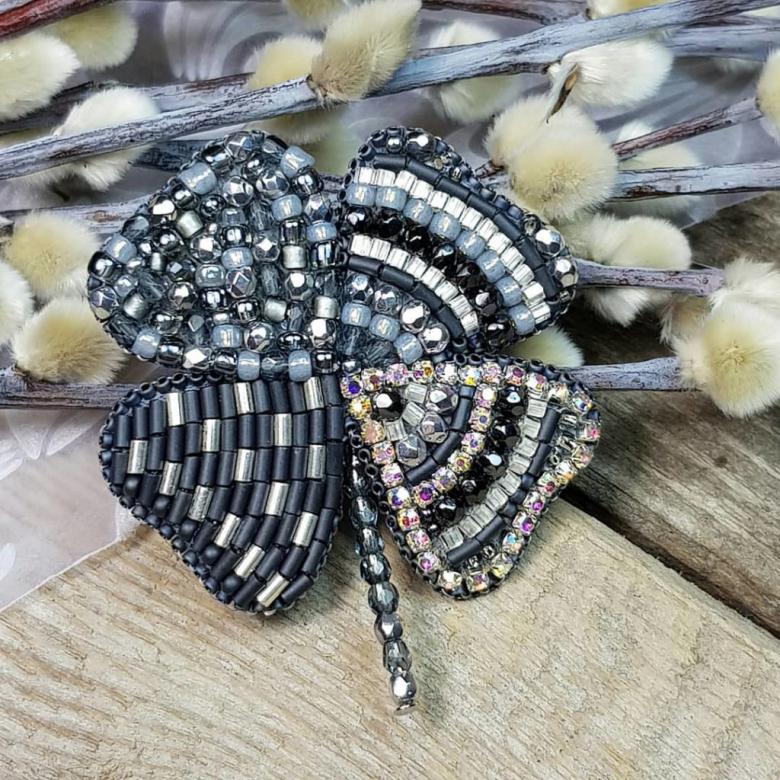
Tools and materials required for work.
A standard set of tools required for beadwork:
- Paper. Of it, a drawing of the work is made.
- A pin. With its help, the brooch will be attached to the clothes.
- Special glue, which is designed to work with paper and felt. Often easily washed away with water.
- Bead needle. Selected specifically for the diameter of the thread used.
- Beading thread or fishing line. Bead thread must have a high resistance to wear.
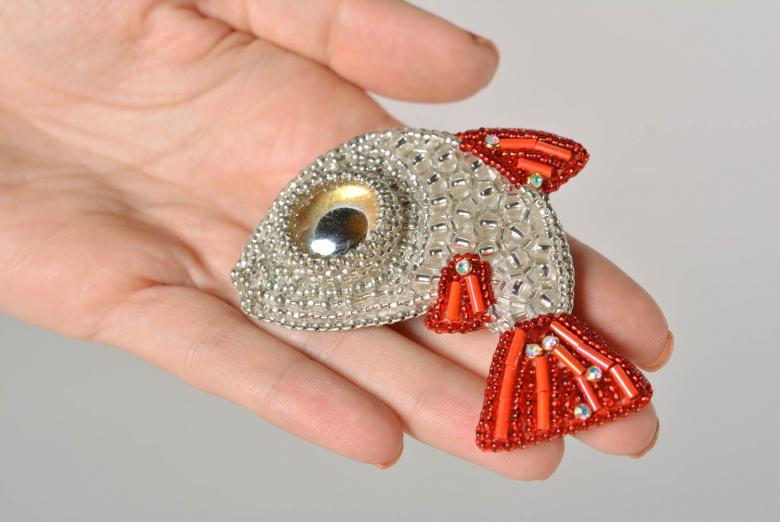
Beading thread can be different:
- Natural. Such thread is pleasant to the touch and has a large palette of colors. Disadvantages: it rots with high moisture and quickly wears out.
- Synthetic. Has a high resistance to external factors, almost no shrinkage. Disadvantages: can cause allergic reactions.
- Reinforced. This thread is additionally braided with additional thread, which increases the indicators of wear resistance and durability. Disadvantages: high price and aggressive chemical composition.
Auxiliary tools: scissors, threads.
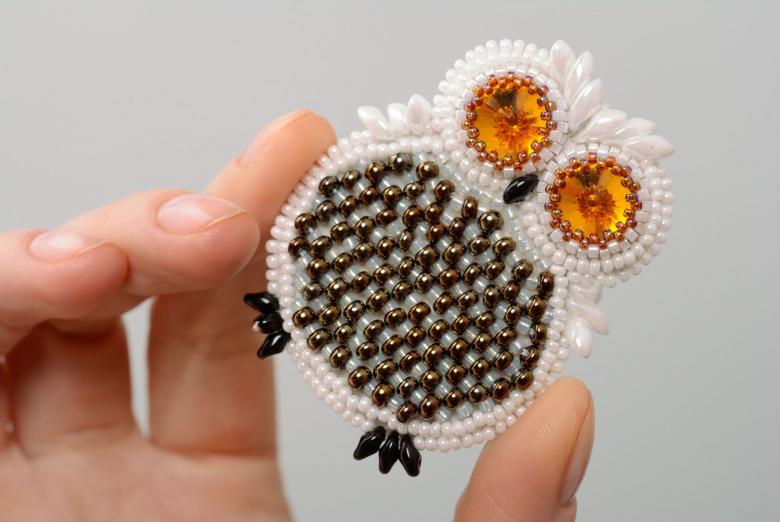
Standard set of necessary materials:
- Felt. Fabric consisting of wool fibers, is the basis for embroidery. Its varieties:
- Natural. This fabric can be dyed, it does not cause allergic reactions. Disadvantages: high cost, low resistance to physical deformation.
- Half-wool. It consists of wool and viscose in the ratio of 60:40. The material is not suitable for the manufacture of small brooches.
- Artificial. This felt can be washed, it will not lose its shape or fade.
- Beads. Small beads, which are the main element of the brooch. The basic requirement for beads: uniformity.

The beads are of the following types:
- Chinese. They are not of a very high quality, the beads are of a different size.
- Czech. Inexpensive, but a very high quality material. Beads have a flat shape and the same size. A small percentage of faults.
- Japanese. One of the highest-quality beads in the world, the quality and percentage of marriage is not inferior to the Czech.
- Indian. Not a very high quality beads, which has a low strength.

There are three forms of beads:
- Regular. A round shape with a hole in the middle.
- Chopped. Short beads cylindrical shape (up to 2 millimeters).
- Glass beads. Long beads cylindrical shape (up to 3 centimeters).
- Beads. Necessary to give the brooch a greater volume, used as a decoration.
- Leather. For decoration on the backside.
- Ribbon. Used for trimming the brooch from the edge.
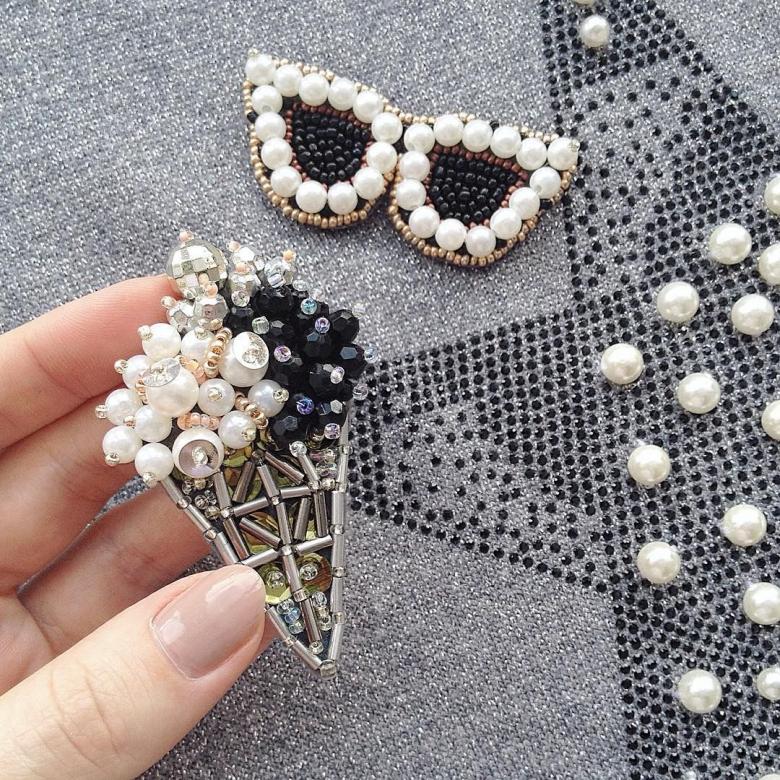
Tips for beginners
Before you start, you need to choose what will be the brooch, in the form of what will be made brooch, it can be some kind of plant, insect, animal or flower.

The preparatory stage:
- At the very beginning it is necessary to decide on the form of the product, the best option for beginners is a flower or a butterfly. After gaining initial experience, you can move on to making three-dimensional brooches.
- The second step will be the choice of material for making, it is worth remembering that the material should be combined with each other. A great option would be to make precious flower crafts with appropriate embellishments.
- It is necessary to make a small blank on which you can practice placing the beads. It is important that the pattern turns out even.
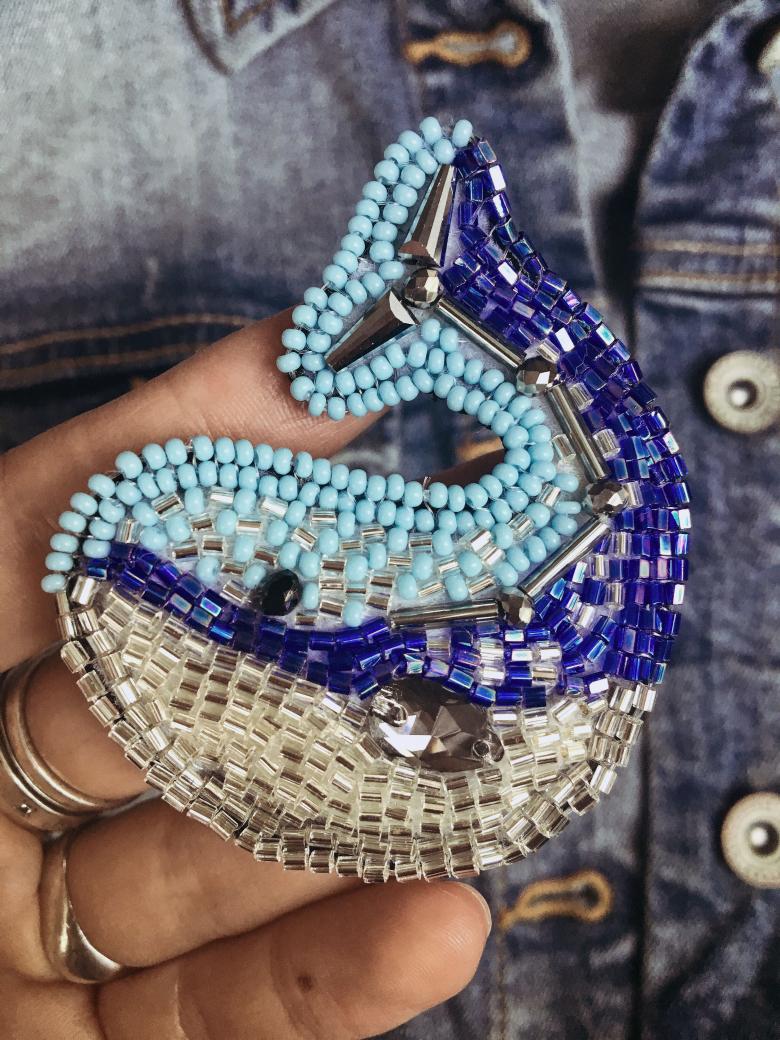
Tips from the professionals:
- It is best to use Czech or Japanese beads, they are of the highest quality.
- Use a special needle for beads.
- Use a ready-made pattern at the beginning.
- Do not start with a large number of color shades at once.
- Do not be afraid to experiment and try new things.

Examples of work
In this section we will consider master classes on weaving different types of brooch from beads.
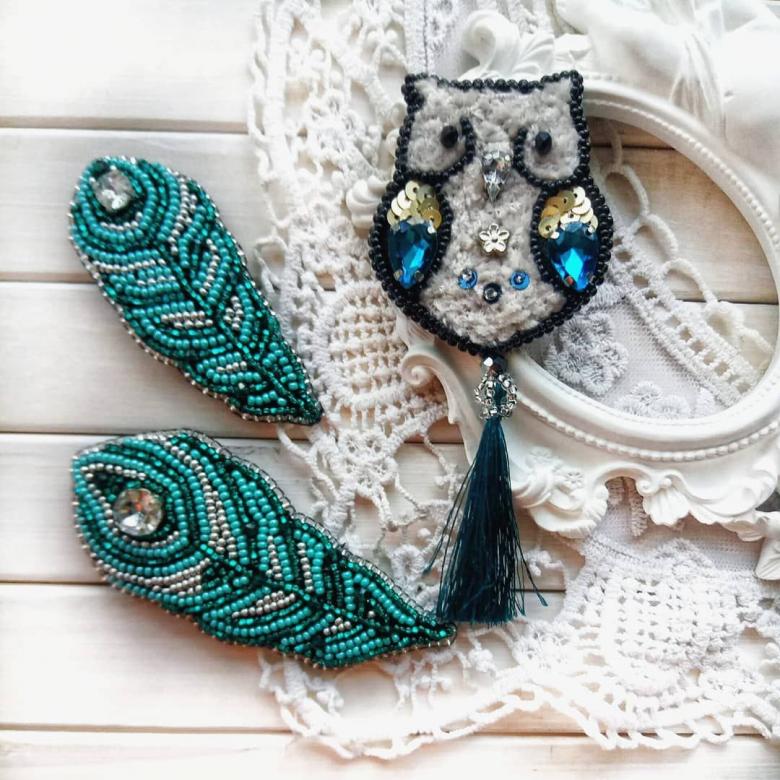
Dragonfly
This brooch will be ideal for the beginner, as it does not require much experience. On its manufacture will not have to spend a large amount of effort and time.

Materials needed:
- Beads, two different colors to choose from.
- Six beads: two large and four smaller.
- Bead thread.
- Scissors.
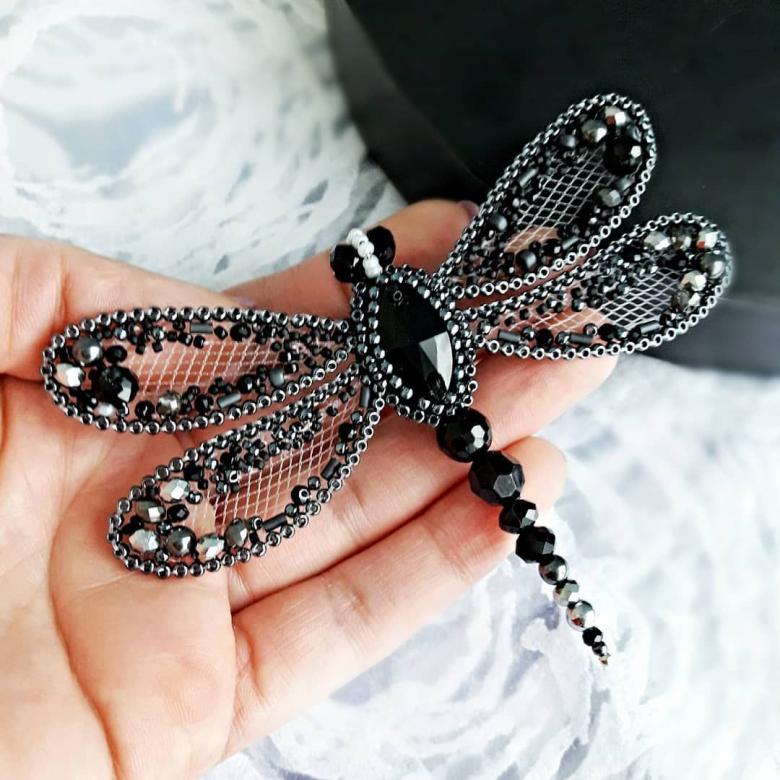
Fabrication algorithm:
- 1 large bead is strung on the wire, then a bead and another large bead. On one side of an additional 3 beads are strung.
- The free end of the wire is threaded through these beads and tightened.
- The second row is done in the same way, but already 4 beads.
- The third row consists of 5 beads.
- At each end of the wire threaded 26 beads of a different color. Then the wire is passed through the first bead and tightened.
- The other two wings are made in the same way, only with 23 beads.
- Row 6 is made similarly to 2-3 of 6 beads. Row 7 is made of 4 beads. Row 8 of 3 beads. Subsequent rows are 2 beads each, for a total of 10-12 rows.
- The last row of wire threaded through the beads, made a small node on the wrong side. Excess wire is trimmed.

Kitten .
Consider the creation of a brooch on the example of making everyone's favorite kitten Gav.
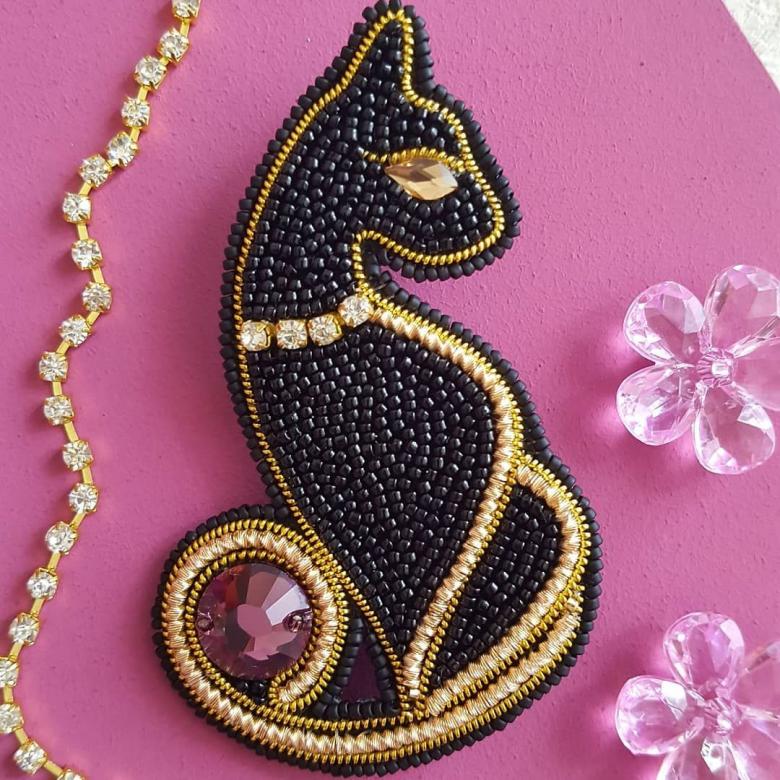
Materials needed:
- Felt.
- Beads in different colors.
- Scissors with a pencil.
- String of beads.
- A pin.
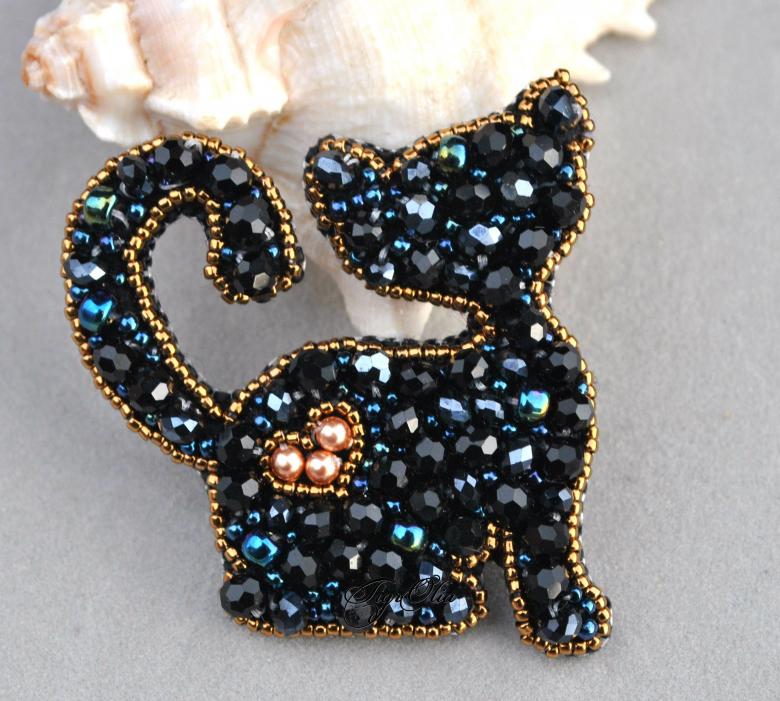
The algorithm of manufacture:
- On the Internet there is an embroidery scheme and a blank.
- From the felt cut out the workpiece.
- Then the kitten is embroidered on the felt according to the scheme, starting with the edge to the middle.
- A pin is attached to the back side.
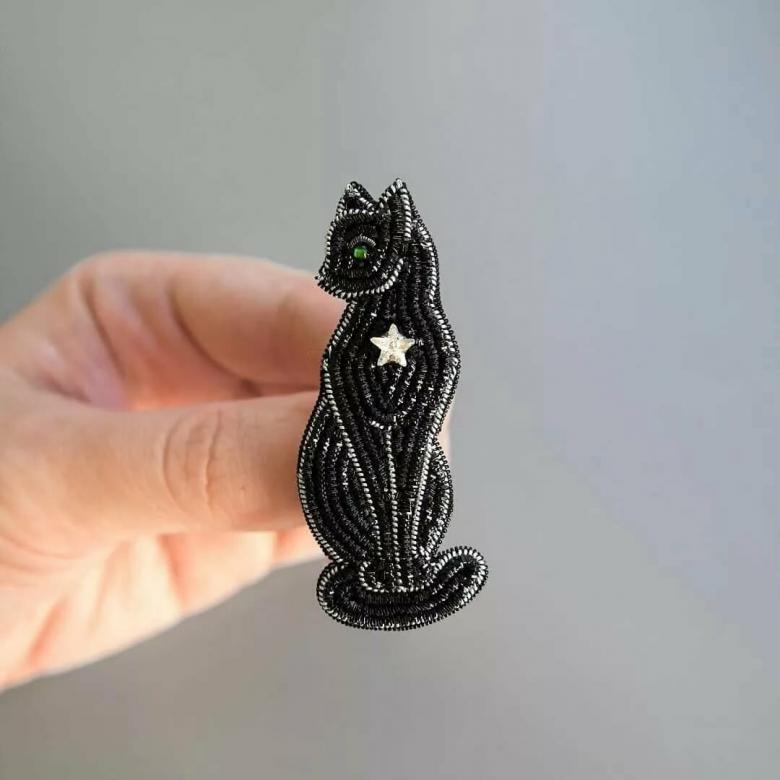
Watermelon .
- A piece of watermelon is cut out of felt.
- On the felt outline is drawn. Created an additional contour on the reverse side.
- Embroidery begins on the wrong side. Thread is passed with a knot and derived on the front side.
- Embroidering is carried out by the method of "back needle". Carefully embroidered outlines of the watermelon, two beads. To avoid gaps, the beads should be sewn as close to each other as possible.
- If you run out of thread, the remainder of the first thread should be wrapped around the last 3-4 beads. The new thread should also start embroidering through the last 3-4 beads.
- The excess part of the felt is cut off. The beads can be treated with clear glue or varnish to make the beads stick together better.
- The same watermelon pattern is cut out of cardboard and glued to the back of the brooch. A device for a trinket is attached to it.
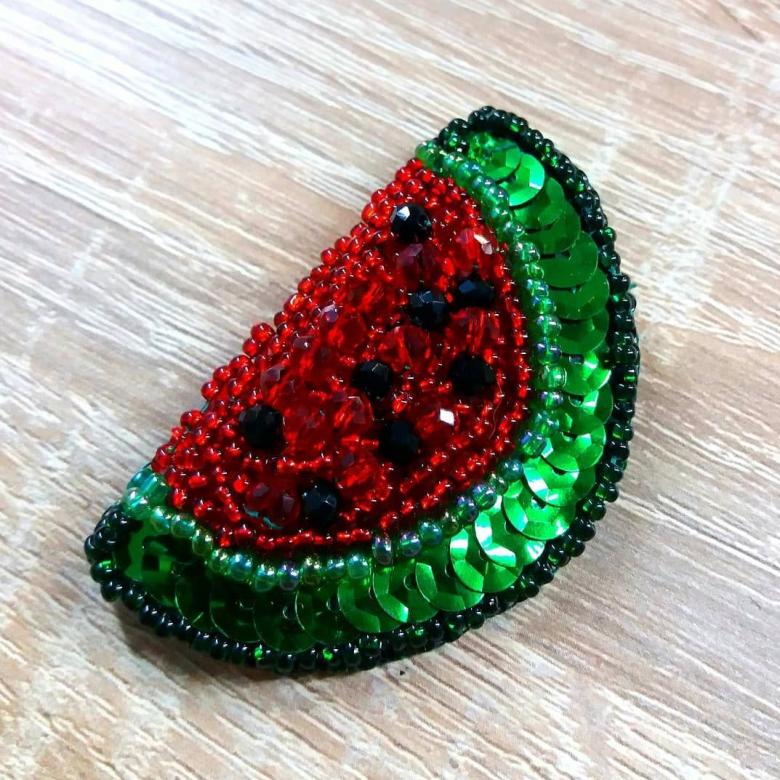
Making brooches from beads is a fascinating activity, which you can turn into your own hobby. On the Internet you can find a large number of different options and schemes of products of any complexity. You definitely won't have to be bored.

